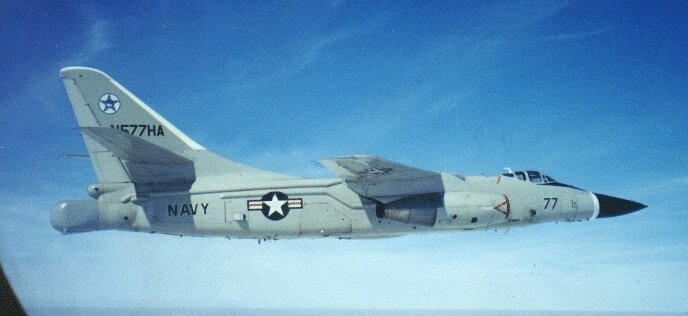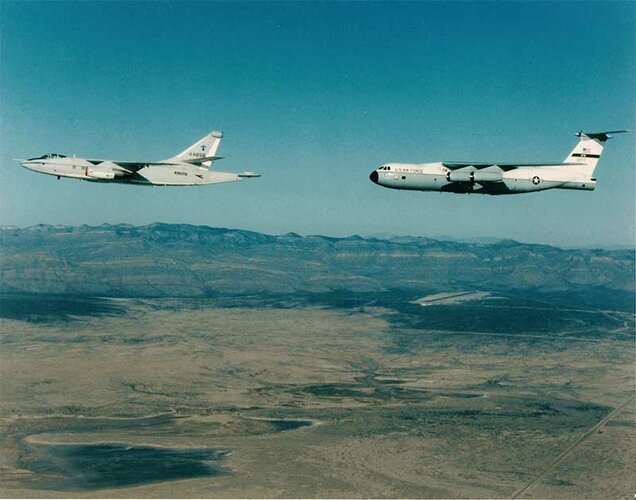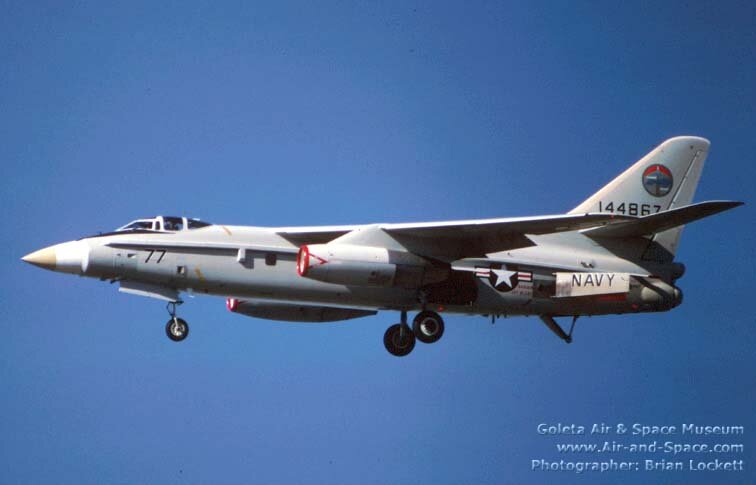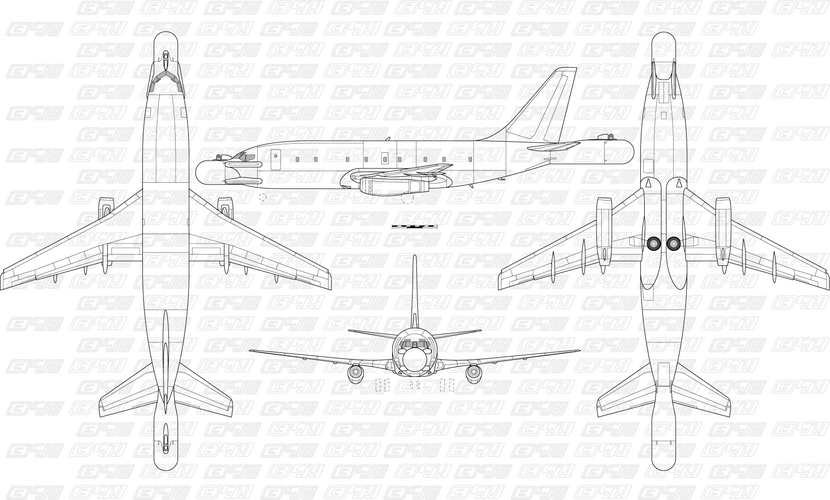You know that if you so dislike him, you aren't forced to watch....unless you are into "hate watching".10 seconds into the video with creepy guy who I try to avoid and 110% is incorrect.
You are using an out of date browser. It may not display this or other websites correctly.
You should upgrade or use an alternative browser.
You should upgrade or use an alternative browser.
Boeing NT-43A Radar Test Bed, 73-1155 aka 'Bill Clinton Airplane'
- Thread starter flateric
- Start date
- Joined
- 16 April 2008
- Messages
- 9,543
- Reaction score
- 14,274
You know that if you so dislike him, you aren't forced to watch....unless you are into "hate watching".
I do appreciate a warning when a posted video is egregiously wrong, though.
- Joined
- 6 August 2007
- Messages
- 3,831
- Reaction score
- 5,632
You know that if you so dislike him, you aren't forced to watch....unless you are into "hate watching".
This was the first time I actually attempted to watch one of his videos. YouTube frequently tries to shove his videos down my throat as "recommendations" and I have never taken the bait. Again, the guy comes off as creepy.
There was absolutely nothing correct in this video other than pointing out the locations of the fore and aft radomes.
- Joined
- 6 August 2007
- Messages
- 3,831
- Reaction score
- 5,632
NT-43 and B-2 conducting measurements over Death Valley in 2022
View: https://www.youtube.com/watch?v=z87kpAjHB8U
Signature measurement flights are typically done through Death Valley for non sight-sensitive aircraft. More covert testing is done within the China Lake airspace (near Randsburg Wash) and two areas inside the Nevada Test and Training Range.
Signature measurement flights are typically done through Death Valley for non sight-sensitive aircraft. More covert testing is done within the China Lake airspace (near Randsburg Wash) and two areas inside the Nevada Test and Training Range.
I have to admit that I do share your opinion. I don't understand his take at swarming every subject with dozens of video per week.
Undoubtedly he has some talents to keep such momentum. But for God Sake, a bit of more research would certainly produce something worth to see, at least for my own taste.
There is so much interesting YouTube channels dedicated to aviation that people like him seeking to be on top should look as a source of inspiration.
Undoubtedly he has some talents to keep such momentum. But for God Sake, a bit of more research would certainly produce something worth to see, at least for my own taste.
There is so much interesting YouTube channels dedicated to aviation that people like him seeking to be on top should look as a source of inspiration.
You do realise it is a business model and that Simon is just the presenter. The writing is done by othersI have to admit that I do share your opinion. I don't understand his take at swarming every subject with dozens of video per week.
Undoubtedly he has some talents to keep such momentum. But for God Sake, a bit of more research would certainly produce something worth to see, at least for my own taste.
There is so much interesting YouTube channels dedicated to aviation that people like him seeking to be on top should look as a source of inspiration.
- Joined
- 28 January 2008
- Messages
- 979
- Reaction score
- 2,072
When lived in AV even after I left NG and left the AV in 2020, when a B-2 took flew over the house at exactly 0530, time for air-to air imaging, like clockwork.NT-43 and B-2 conducting measurements over Death Valley in 2022
View: https://www.youtube.com/watch?v=z87kpAjHB8U
Signature measurement flights are typically done through Death Valley for non sight-sensitive aircraft. More covert testing is done within the China Lake airspace (near Randsburg Wash) and two areas inside the Nevada Test and Training Range.
Scott Kenny
ACCESS: USAP
- Joined
- 15 May 2023
- Messages
- 11,055
- Reaction score
- 13,272
I'm assuming because of the big nose, and the big dong at the tail.Why is it known as the "Bill Clinton" plane?
and the big dong at the tail.
I suppose its' named "Willard" (After all Willard is longer than Willy)
There is a part of me that Straka, Rasmussen
and others at NCAR used this as an airborne Doppler On Wheels (DOW) replacement.
Recently, the Storm Chase community suffered not one but two losses--Stormtrack's lead --and now--Chuck Doswell.
and others at NCAR used this as an airborne Doppler On Wheels (DOW) replacement.
Recently, the Storm Chase community suffered not one but two losses--Stormtrack's lead --and now--Chuck Doswell.
- Joined
- 28 January 2008
- Messages
- 979
- Reaction score
- 2,072
Call Sign: Blue Dress 1. The original imaging antenna was cigar shaped, the projected waveforms were from the Lewinsky Effect. The pilot always denied saying, I did not image that aircraft!Why is it known as the "Bill Clinton" plane?
_Del_
I really should change my personal text... Or not.
- Joined
- 4 January 2012
- Messages
- 1,315
- Reaction score
- 1,798
You have been very naughty lately, and I'm afraid I'm going to have to ask you sit in the back of the class with me such that we can snicker quietly together.Call Sign: Blue Dress 1. The original imaging antenna was cigar shaped, the projected waveforms were from the Lewinsky Effect. The pilot always denied saying, I did not image that aircraft!
- Joined
- 6 August 2007
- Messages
- 3,831
- Reaction score
- 5,632
There is a part of me that Straka, Rasmussen
and others at NCAR used this as an airborne Doppler On Wheels (DOW) replacement.
Recently, the Storm Chase community suffered not one but two losses--Stormtrack's lead --and now--Chuck Doswell.
No, it performs airborne diagnostic radar imaging of aircraft.
It regularly performs this service for B-2s that have undergone maintenance.
Recently it has been used to perform this service in support of the development of the new F-22 pods.
- Joined
- 28 January 2008
- Messages
- 979
- Reaction score
- 2,072
If we end up sn
You have been very naughty lately, and I'm afraid I'm going to have to ask you sit in the back of the class with me such that we can snicker quietly together.
I'll have to contact Elon, need a ride to and a drink at the Mars Bar. Snicker, Snicker.You have been very naughty lately, and I'm afraid I'm going to have to ask you sit in the back of the class with me such that we can snicker quietly together.
- Joined
- 19 February 2007
- Messages
- 1,430
- Reaction score
- 2,644
To share a Bit'o'Honey? Or some W&Ws? After all, in zero-g, no one can hear ice cream.I'll have to contact Elon, need a ride to and a drink at the Mars Bar. Snicker, Snicker.
- Joined
- 28 January 2008
- Messages
- 979
- Reaction score
- 2,072
That one kicked me right in the Zagnuts, off to the Milky Way! I think we better get back on topic but it was fun.To share a Bit'o'Honey? Or some W&Ws? After all, in zero-g, no one can hear ice cream.
- Joined
- 6 August 2007
- Messages
- 3,831
- Reaction score
- 5,632
I remember the original airborne imaging aircraft had a flat whale-tail type aft radar antenna, I assume that has been replaced?
There were two aircraft, one with a forward radar and one with a flying saucer for the rear radar. The first aircraft eventually got a rear radar and the other aircraft was retired.
- Joined
- 6 August 2007
- Messages
- 3,831
- Reaction score
- 5,632
Reading various threads around the internet about this aircraft it seems there are some misconceptions about what it actually does.
Low observable aircraft are built to RCS requirements and specifications. How do you measure whether the produced aircraft meets the specification?
Mounting the aircraft on a pole for static RCS testing is useful but not always practical and does not reflect what the RCS will be when the aircraft is flying and operational. Flying aircraft have vibrating engines, active antennas, moving parts, and flexing structures which all affect the RCS. The physical and electrical properties of materials also change in flight.
Collecting standard RCS measurements may tell you there is a problem but does not help identify the source of the problem. A polar plot may not be sufficient to identify the individual scattering sources contributing to the RCS.
The NT-43 Radar Testbed (RAT55) carries radars in the nose and tail that not only collect RCS data but also act as diagnostic imaging radars. These radars use inverse synthetic apeture radar to image the scattering sources of the target aircraft. Individual scattering sources are easy to identify. This is what you need to correct any problems in the RCS.
In-flight ISAR diagnostic imaging is performed on low observable aircraft regularly to verify the signature after maintenance, etc.
Below is an example ISAR image of an aircraft.
To give a more modern example of a diagnostic ISAR image....
The lower chamber of Lockheed's Helendale RCS range has diagnostic radar similar to those used on NT-43. These are used to image the models before and after they are tested and to find potential problems with the models (coating flaws, etc.). Many years ago Lockheed had a great video about stealth up that showed this, and showed the output of the diagnostic radar imaging system.
Thankfully @flateric posted screenshots from the video here:
Such as these :
![Lockheed Martin - How - Stealth.flv_snapshot_02.49_[2011.04.27_20.31.25].jpg Lockheed Martin - How - Stealth.flv_snapshot_02.49_[2011.04.27_20.31.25].jpg](https://www.secretprojects.co.uk/data/attachments/295/295437-c3168915170687d088124b3b18a83787.jpg)
![Lockheed Martin - How - Stealth.flv_snapshot_02.59_[2011.04.27_20.32.50].jpg Lockheed Martin - How - Stealth.flv_snapshot_02.59_[2011.04.27_20.32.50].jpg](https://www.secretprojects.co.uk/data/attachments/295/295438-4b87c10fead737a98105307b3f328476.jpg)
Which were images of a "pole cap" calibration model. This gives you some idea of what the NT-43 radar systems "see" when they are imaging an aircraft. NT-43 does this in flight, with the "client" aircraft also in flight. In flight testing of aircraft signatures is extremely important - a flying, operating aircraft is very different than one sitting on a pole on the ground!
Aeroweanie
ACCESS: Confidential
- Joined
- 1 May 2020
- Messages
- 95
- Reaction score
- 260
- Joined
- 19 February 2007
- Messages
- 1,430
- Reaction score
- 2,644
144867 was the Hughes/Raytheon testbed for the APG-71 radar for the F-14D program. Opinion only, but I think it unlikely that it was also used for diagnostic imaging during the same time period.
Aeroweanie
ACCESS: Confidential
- Joined
- 1 May 2020
- Messages
- 95
- Reaction score
- 260
After the APG-71 work, 144867 (N577HA) was later used as diagnostic imaging aircraft. I know several people that flew missions on it. RAT 55 replaced it.144867 was the Hughes/Raytheon testbed for the APG-71 radar for the F-14D program. Opinion only, but I think it unlikely that it was also used for diagnostic imaging during the same time period.

- Joined
- 19 February 2007
- Messages
- 1,430
- Reaction score
- 2,644
Thank you for the image. That explains a lot.After the APG-71 work, 144867 (N577HA) was later used as diagnostic imaging aircraft. I know several people that flew missions on it. RAT 55 replaced it.
View attachment 759978
Similar threads
-
-
Special Mission Test Beds & Support Platforms (NT-43, ASTB, Dragon Star, etc.)
- Started by quellish
- Replies: 8
-
-
Battlefield drone dirigibles being tested in Utah desert
- Started by seruriermarshal
- Replies: 8
-



